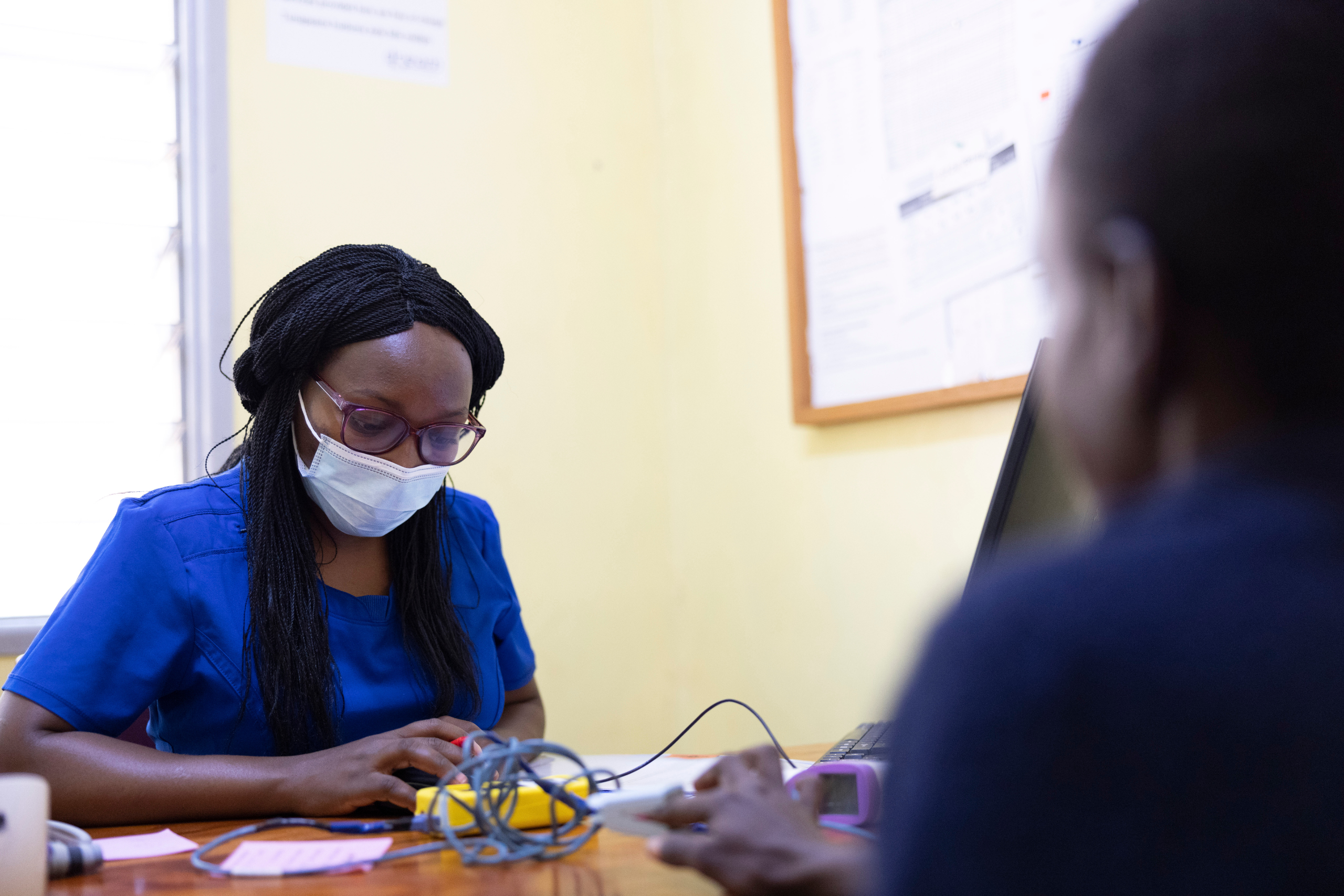The challenge of AIDS is not over: rising resistance in Africa
An article by Mario Giro on Domani
In many African countries, over 83 percent of people with HIV—approximately 26 million individuals—are on treatment. However, specialists and doctors are raising alarms about the need for more conscious use of medication. The Dream program of the Community of Sant’Egidio operates in ten African countries with treatment protocols for AIDS, as well as for non-communicable diseases.
AIDS/HIV continues to be one of the main global health challenges, particularly in Africa. There are still nearly 40 million people living with HIV worldwide, with approximately 26 million in sub-Saharan Africa. The Dream program (Disease Relief through Excellent and Advanced Means) of the Community of Sant’Egidio has been active in ten African countries, offering treatment protocols for AIDS and non-communicable diseases such as cervical cancer, supported by around 30 molecular biology laboratories and telemedicine.
On January 24th, a significant conference on AIDS treatment in Africa was held in the Italian Parliament in the presence of Foreign Minister Antonio Tajani and Marco Impagliazzo, president of Sant’Egidio. The event brought together African health ministers and directors of various African care programs to assess the situation and issue a global warning.
Despite a 42 percent reduction in new infections between 2010 and 2022 and an increase in access to antiretroviral drugs reaching 83 percent of people with HIV in sub-Saharan Africa, the absolute number of people living with HIV continues to rise each year.
Reduction in Mortality
This outcome is due to a decrease in mortality rates—many people with HIV are living longer thanks to advances in treatment. However, it also results in an increased financial and managerial burden. Consequently, AIDS care is starting to be perceived as a strain on healthcare administrations.
The Community of Sant’Egidio was among the very few organizations to focus on AIDS in Africa at the turn of the millennium when the issue was largely neglected. It criticized wealthy countries for assuming that Africa required minimal assistance, deeming Africans unable to care for themselves. After significant efforts to confront international agencies and seek support, treatment centers were established with laboratories and other resources, meeting the same high scientific and healthcare standards as the rest of the world—the essence of the Dream program.
The Emerging Threat of Drug Resistance
After 25 years of dedicated work, a new alarm is sounding due to the growing phenomenon of drug resistance. One of the most effective tools in the fight against HIV is Dolutegravir (DTG), which has become the cornerstone of many treatment regimens since 2018. In many African countries, over 83 percent of people with HIV are on therapy, although millions remain untreated. However, specialists have highlighted that 14 percent of those on DTG do not achieve viral suppression (i.e., undetectable viral loads). This increases the risk of resistance, a problem exacerbated by the lack of advanced diagnostic testing and regular patient monitoring.
In other words, there is a risk—similar to 30 years ago—of oversimplifying AIDS treatment in Africa, making it unsustainable despite the availability of an excellent drug like DTG. Without proper monitoring, there is a danger of wasting its potential.
Controlling Resistance
Controlling resistance is essential to prevent it from escalating globally. As at the beginning of the AIDS pandemic, failing to provide proper care in Africa becomes a global problem. There are still several effective lines of treatment—at least seven—but in the West, monitoring ensures the use of these drugs effectively before resorting to DTG, which represents the last line of defense. This approach conserves “molecules” for future use, as described in medical terms.
Such careful attention is lacking in Africa, partly due to a shortage of personnel to monitor drug use and track viral loads. Simultaneously, the rise of non-communicable diseases (such as hypertension or diabetes) among people living with HIV creates a “double burden of disease,” further straining healthcare systems.
A Trend Towards Self-Reliance
Globally, there is a growing trend of placing full responsibility for care on the patient, especially for lifelong diseases like AIDS. This is driven by technological advances (internet, Google, artificial intelligence) and a sense of isolation, leaving patients to manage their own health.
In Africa, this trend is spreading rapidly due to the scarcity and high cost of healthcare infrastructure for underfunded public budgets. The simplification of care is therefore understandable, but it carries the risk of triggering a powerful new crisis.
The conference emphasized the need to act while there is still time. Similar to antibiotics, all possible alternatives must be tested before resorting to the last line of defense like DTG.
Gradual and Thoughtful Approaches
The conference also included the participation of Italy’s Health Minister, Orazio Schillaci, who highlighted Italy’s advanced work in AIDS care and its role in leading this new battle, supported by scientific data from the Dream program.
A thoughtful and gradual approach is essential to avoid finding ourselves defenseless, as Professor Carlo Federico Perno pointed out. For instance, resistance to antibiotics has increased significantly, and no new antibiotic molecules have been discovered in the last 14 years.
Good healthcare is not just about miracle drugs but also about how they are used, as well as the lifestyle and care surrounding the patient. Personalizing treatments may be costly and demanding, but it ultimately saves lives and reduces expenses.
The paradox is that accepting simplified care models for Africa risks creating a new “double standard” in treatments, bringing us back to the early days of the AIDS epidemic.
